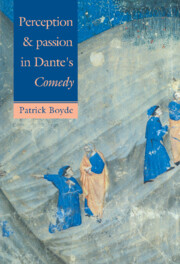Book contents
- Frontmatter
- Contents
- Preface
- PART ONE Coming to terms with Aristotle
- 1 The prestige and unity of the Aristotelian corpus
- 2 Movement and change in lifeless bodies
- 3 Self-change: growth and reproduction in plant life
- 4 Self-movement: sensation and locomotion in animal life
- PART TWO The operations of the sensitive soul in man
- PART THREE The operations of the rational soul
- PART FOUR Combined operations
- Notes
- Select bibliography
- Index of Latin terms
- Index of longer quotations
- General index
3 - Self-change: growth and reproduction in plant life
Published online by Cambridge University Press: 14 October 2009
- Frontmatter
- Contents
- Preface
- PART ONE Coming to terms with Aristotle
- 1 The prestige and unity of the Aristotelian corpus
- 2 Movement and change in lifeless bodies
- 3 Self-change: growth and reproduction in plant life
- 4 Self-movement: sensation and locomotion in animal life
- PART TWO The operations of the sensitive soul in man
- PART THREE The operations of the rational soul
- PART FOUR Combined operations
- Notes
- Select bibliography
- Index of Latin terms
- Index of longer quotations
- General index
Summary
Life and soul
From the study of change as such, in all bodies whatsoever, we pass now to the study of self-change in those bodies – plants, animals and human beings – which have an internal principium mutationis known as the anima.
Like the Greek ‘psyche’, to which it corresponds, anima has been conventionally translated into English as ’soul‘; and the modern reader's first task is to clear his or her mind of the connotations that this word has acquired in popular Christianity, and to re-establish the etymological link with the adjective ‘animate’, which still conveys both the meaning and the neutral tone of the medieval original. In other words, the ‘souls’ that concern us in the present chapter are not necessarily ‘immortal’, and are to be found in dogs and in trees as well as in human beings. Everything that has life is by definition ‘en-souled’ (a corpus habens vitam must be animatum). Everything that is ‘animate’ must be ‘animated’ by an anima of some kind.
The term anima may be correctly paraphrased as the ‘vital principle’ or the ‘first principle of life’ (primum principium vivendi), or as ‘that by which the body first lives’ (id quo primum vivit). But the simplest possible definition is ‘the substantial form of a living body’ (forma substantialis corporis viventis).
A forma substantialis, it will be remembered, is that by virtue of which a body exists or subsists in its own right (id quo est), and also that by virtue of which it possesses a certain number of characteristic properties or powers.
- Type
- Chapter
- Information
- Perception and Passion in Dante's Comedy , pp. 32 - 43Publisher: Cambridge University PressPrint publication year: 1993



